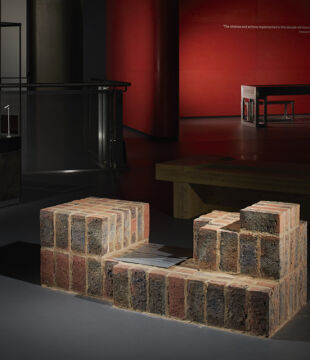
Details
Location: London
Brick Manufacturers: Ibstock PLC / Michelmersh Brick Holdings PLC
Brick Names: Olde English Grey, Commercial Red / Avorio
Architect: Pitman Tozer Architects
Brickwork Contractor: S&L Contracts Ltd
About the project
Bulrush Court, Leaside Lock is the second phase of a major residential redevelopment by The Guinness Partnership in Bromley by Bow, London. Situated within a wider regeneration area and part of the London Legacy Development Corporation zone, the project forms a key part of a 950-home masterplan. Designed by Pitman Tozer Architects, the scheme delivers 144 high quality affordable homes in a mid-rise mansion block. It includes a mix of 1, 2 and 3-bedroom units, 213 sq m of commercial space, and new public realm, responding to the client brief for accessible, high-density, affordable living.
The building is arranged around a communal landscaped courtyard and is conceived as a city block that defines streets, squares and courts, promoting a human scale in a high-density urban environment. The massing ranges from seven storeys to nine storeys, with its design shaped through collaborative workshops and Quality Review Panel sessions. The building sits confidently within the masterplan, with four different edge conditions responding to the adjacent buildings, landscape, and the River Lea.
The use of clay brick is fundamental to the architectural identity and success of Bullrush Court. The building’s external envelope uses 102.5mm brickwork, structured into three main elements: the civic face, the courtyard elevation, and a darker plinth at ground level. These elements combine to provide texture, depth, and clarity, reinforcing the overall design strategy.
The civic face is the most formal, facing Imperial Street, and uses a darker banded brickwork with brick detailing between windows. This approach lends a linear form, a rational rhythm, and curved corners made with snapped headers, avoiding the need for brick specials. Inset balconies sit within this formal grid, with two sizes of openings and pier dimension establishing a strong architectural order.
In contrast, the courtyard elevation is more informal, made with lighter red brickwork. It is designed to improve light levels and signal a semi-private space for residents. Banding is used selectively and vertically to highlight entrance areas, while cantilevered balconies project over the communal landscaped area. These balconies, built with a brick base and metal railings, feature curved brickwork edges that soften the transition from the formal civic façade to the more relaxed internal court. The horizontal banding unites varied window size and balconies, building upon experience from previous schemes like The Reach and Mint Street for Peabody.
A darker brick plinth wraps the base of the building in line with London’s architectural traditions, providing a visually grounded base. This treatment continues the language of robust, layered design, anchoring the block within the streetscape.
Bulrush Court demonstrates how brick detailing with thoughtful massing, and a strong sense of material identity can create distinctive, affordable housing rooted in place, history, and community. The result is a building that is both recognisable and individual, delivering practical, sustainable homes with long-term architectural value.















